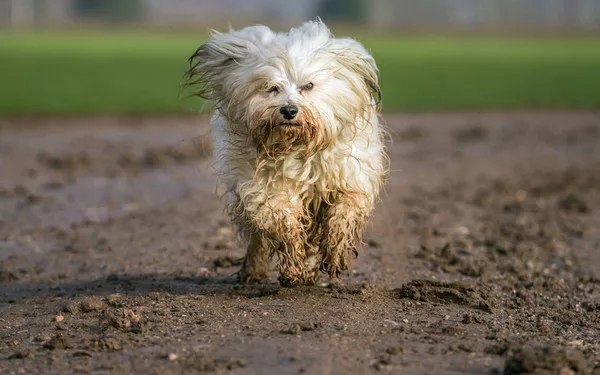Norwegian Forest Cats (NFCs) have long captivated cat enthusiasts with their majestic appearance and robust size. These feline giants, often dubbed “Wegies,” boast a distinctive blend of elegance, strength, and a luxurious, dense coat. As we delve into the mysteries behind their remarkable size, we uncover a fascinating journey through history, genetics, and the unique environmental factors that have contributed to the development of these magnificent creatures.
Historical Roots: Survivors of the Norse Wilderness
The Norwegian Forest Cat‘s origins trace back to the dense forests of Norway, where they roamed alongside Vikings more than a thousand years ago. Their size and thick, water-resistant fur served as a natural shield against the harsh Nordic climate. In this section, we explore the historical context that forged the Wegie’s robust physique and adaptive qualities.
Adaptations for Survival: Nature’s Influence on Size
Survival in the Nordic wilderness demanded specific adaptations, and the Norwegian Forest Cat evolved to meet these challenges head-on. Their large size can be attributed to a combination of factors, including their need for insulation in cold climates, hunting prowess, and territorial requirements. The Wegie’s size is not merely a quirk but a carefully honed survival trait.
Genetic Foundations: Unraveling the Big Cat Code
The genetics of Norwegian Forest Cats play a pivotal role in determining their size. In this section, we explore the underlying genetic factors responsible for the Wegie’s impressive stature. We delve into the breed’s genetic makeup, examining how selective breeding has influenced their size over generations. The interplay of various genes, including those affecting bone structure, muscle development, and overall growth, offers insights into the genetic blueprint of these magnificent felines.
Selective Breeding Practices: Guiding the Evolution of Size
Breeders have played a crucial role in shaping the Norwegian Forest Cat as we know it today. Through selective breeding practices, they have emphasized certain traits, including size, while maintaining the breed’s overall health and temperament. This section examines the ethical considerations and responsible breeding practices that contribute to the development of healthy, large Norwegian Forest Cats.
Distinctive Features: Anatomy and Physiology of a Giant
Beyond their size, Norwegian Forest Cats exhibit distinct anatomical features that contribute to their robust appearance. From their large, expressive eyes to tufted ears and bushy tails, every aspect of their anatomy serves a purpose. We explore how these features enhance their survival abilities and contribute to the overall charm of these feline giants.
Nutrition and Growth: Fueling the Wegie’s Magnitude
The saying “you are what you eat” holds true for Norwegian Forest Cats. Proper nutrition is a key factor in their growth and development. This section delves into the dietary requirements of Wegies, emphasizing the importance of a well-balanced diet in maintaining their size, health, and overall well-being. From kittenhood to adulthood, understanding their nutritional needs is crucial for fostering optimal growth.
Environmental Influences: Beyond Genetics and Nutrition
While genetics and nutrition are primary contributors to the Norwegian Forest Cat’s size, environmental factors also play a role. Factors such as climate, living conditions, and interaction with their human companions can influence their growth and behavior. By exploring these environmental influences, we gain a holistic understanding of the interconnected factors that contribute to the Wegie’s magnificent size.
See Also:Do norwegian forest cats get along with other cats?
Health Considerations: Balancing Size and Well-being
While the Norwegian Forest Cat’s size is undoubtedly a source of fascination, it is essential to address potential health considerations associated with their stature. This section discusses common health issues that may arise in larger cat breeds and provides insights into responsible pet ownership, including regular veterinary check-ups, appropriate exercise, and preventive care measures.
The Human Connection: The Role of Owners in Wegie Well-being
Norwegian Forest Cats, despite their size and independent nature, thrive on the companionship of their human counterparts. Understanding the emotional and social needs of these majestic felines is crucial for fostering a strong bond. This section explores the symbiotic relationship between NFCs and their owners, highlighting the responsibilities and joys of caring for these gentle giants.
Conclusion: Decoding the Mystique of Norwegian Forest Cats
In conclusion, the size of Norwegian Forest Cats is a culmination of centuries of adaptation, selective breeding, genetics, and environmental influences. Their majestic presence and robust stature are testaments to the survival instincts ingrained in their DNA. As we continue to appreciate and care for these magnificent feline companions, our understanding of their unique characteristics deepens, enriching the bond between humans and one of nature’s most captivating creations. The Norwegian Forest Cat’s size is not just a physical trait but a living testament to the intricate dance between nature and nurture that shapes the animal kingdom’s diverse wonders.
Related Topics:
Why is my norwegian forest cat not fluffy?
How big can a norwegian forest cat get?
Are norwegian forest cats aggressive?



























